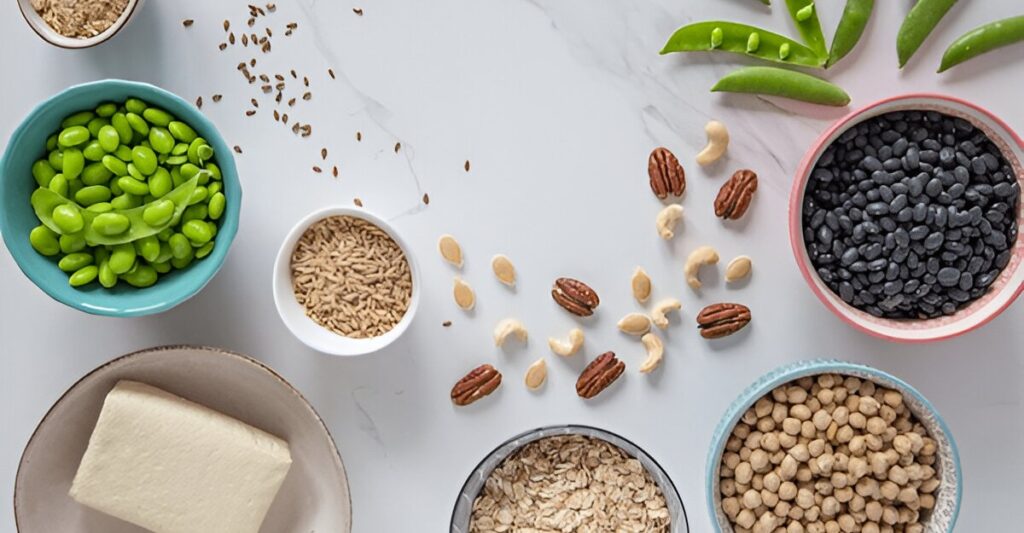Macronutrient cycling, often called nutrient cycling or carb cycling, is a dietary strategy that involves varying your intake of carbohydrates, proteins, and fats on different days or weeks. Popular among athletes, fitness enthusiasts, and those seeking weight loss, macronutrient cycling aims to optimize energy, performance, and body composition. But is it right for you? This guide explores the pros and cons of macronutrient cycling, how it works, and tips to implement it effectively.
What Is Macronutrient Cycling?
Macronutrient cycling involves strategically adjusting the proportions of macronutrients—carbohydrates, proteins, and fats—in your diet based on your activity levels, goals, or training phases. For example, you might eat high carbs on workout days to fuel performance, moderate carbs on lighter days, and low carbs on rest days to promote fat burning.
Common approaches include:
- Carb Cycling: Alternating high-carb, moderate-carb, and low-carb days.
- Protein Cycling: Varying protein intake to support muscle recovery or weight loss.
- Fat Cycling: Adjusting fat intake to balance energy needs.
The goal of macronutrient cycling is to align nutrient intake with your body’s demands, potentially improving performance, metabolism, and body composition.
How Macronutrient Cycling Works
Macronutrient cycling is typically tailored to your lifestyle and goals. Here’s a basic example for a fitness enthusiast:
- High-Carb Days (e.g., intense training): 50% carbs, 25% protein, 25% fat to fuel workouts and replenish glycogen.
- Moderate-Carb Days (e.g., light activity): 40% carbs, 30% protein, 30% fat for balance.
- Low-Carb Days (e.g., rest days): 20% carbs, 35% protein, 45% fat to promote fat burning.
Cycles can last days, weeks, or months, depending on goals like fat loss, muscle gain, or athletic performance. Tracking macros (using apps like MyFitnessPal) ensures precision.
Pros of Macronutrient Cycling
Macronutrient cycling offers several potential benefits, making it appealing for specific goals. Here are the key advantages:
1. Optimized Performance
High-carb days fuel intense workouts, providing energy for strength training or endurance activities. This can enhance performance and recovery, as carbs replenish muscle glycogen stores.
2. Flexible Weight Management
By alternating high- and low-carb days, macronutrient cycling may prevent metabolic plateaus. Low-carb days promote fat burning, while high-carb days support muscle maintenance, making it easier to lose fat without sacrificing muscle.
3. Hormonal Balance
Cycling carbs can support hormones like insulin, leptin, and thyroid hormones, which regulate metabolism and hunger. Regular high-carb days may prevent the hormonal downregulation seen in prolonged low-carb diets.
4. Dietary Flexibility
Unlike rigid diets, macronutrient cycling allows variety. You can enjoy carb-heavy meals (like pasta or rice) on training days while still aligning with fat-loss or fitness goals on low-carb days.
5. Muscle Preservation
High-protein intake on all days supports muscle repair and growth, crucial for athletes or those lifting weights. This makes macronutrient cycling appealing for body recomposition (losing fat while gaining muscle).
Cons of Macronutrient Cycling
Despite its benefits, macronutrient cycling isn’t for everyone. Here are the potential downsides:
1. Complexity and Tracking
Calculating and tracking macros daily can be time-consuming and overwhelming, especially for beginners. It requires meal planning, portion control, and familiarity with food composition.
2. Not One-Size-Fits-All
Macronutrient cycling may not suit everyone. Those with medical conditions (e.g., diabetes) or casual exercisers may find simpler dietary approaches more effective and sustainable.
3. Potential for Overeating
High-carb days can lead to overindulgence, especially if “carbs” translate to processed foods like pastries or pizza. Poor food choices can negate the benefits of cycling.
4. Hunger Fluctuations
Low-carb or low-fat days may increase hunger or cravings, making adherence challenging. Some people feel lethargic or irritable without consistent carb intake.
5. Limited Long-Term Research
While short-term studies support macronutrient cycling for fat loss and performance, long-term data is scarce. Its sustainability and effects over years are less clear.
Who Should Try Macronutrient Cycling?
Macronutrient cycling is best suited for:
- Athletes: Those with structured training schedules (e.g., bodybuilders, runners) who need to optimize performance and recovery.
- Fitness Enthusiasts: Individuals aiming for body recomposition or breaking weight-loss plateaus.
- Experienced Dieters: People comfortable tracking macros and planning meals.
It may not be ideal for:
- Beginners: Those new to nutrition may find it too complex.
- Casual Exercisers: People with minimal activity may not need such precision.
- Those Seeking Simplicity: If you prefer intuitive eating, cycling can feel restrictive.
How to Start Macronutrient Cycling
Ready to try macronutrient cycling? Follow these steps to set yourself up for success:
1. Define Your Goals
Determine whether you’re aiming for fat loss, muscle gain, or performance. This guides your macro ratios and cycle structure.
2. Calculate Your Macros
Use an online calculator or consult a dietitian to estimate your daily calorie and macro needs based on age, weight, activity level, and goals. For example:
- Fat loss: 20-25% calorie deficit.
- Muscle gain: 5-10% calorie surplus.
3. Plan Your Cycle
Align high-carb days with intense workouts, moderate-carb days with light activity, and low-carb days with rest. A weekly cycle might look like:
- Monday (strength training): High-carb.
- Tuesday (cardio): Moderate-carb.
- Wednesday (rest): Low-carb.
- Repeat or adjust.
4. Choose Nutrient-Dense Foods
Prioritize whole foods to maximize benefits:
- Carbs: Oats, sweet potatoes, quinoa, fruits.
- Protein: Chicken, tofu, eggs, Greek yogurt.
- Fats: Avocado, nuts, olive oil, salmon.
5. Track and Adjust
Use a food-tracking app to log meals and monitor macros. Assess progress weekly (weight, energy, performance) and tweak ratios if needed.
6. Listen to Your Body
If low-carb days leave you drained or high-carb days cause bloating, adjust the cycle or consult a nutritionist for personalized tweaks.
Sample Macronutrient Cycling Plan
Here’s a one-day example for a 70 kg person aiming for fat loss (training day, high-carb):
- Calories: ~1800 kcal.
- Macros: 50% carbs (225g), 25% protein (112g), 25% fat (50g).
- Breakfast: Oatmeal with banana, chia seeds, and protein powder (60g carbs, 25g protein, 10g fat).
- Snack: Greek yogurt with berries (20g carbs, 15g protein, 5g fat).
- Lunch: Grilled chicken with quinoa and roasted veggies (70g carbs, 30g protein, 15g fat).
- Pre-Workout: Rice cake with almond butter (30g carbs, 5g protein, 10g fat).
- Post-Workout: Protein shake with fruit (30g carbs, 25g protein, 0g fat).
- Dinner: Salmon with sweet potato and broccoli (45g carbs, 30g protein, 15g fat).
Adjust portions for low- or moderate-carb days by swapping carbs for fats or protein.
Common Mistakes to Avoid
To make macronutrient cycling effective, steer clear of these pitfalls:
- Poor Food Choices: Relying on junk food (e.g., donuts) for carbs undermines health benefits.
- Inconsistent Tracking: Guessing portions can skew macros and results.
- Overcomplicating: Starting with complex cycles can lead to burnout. Keep it simple at first.
- Ignoring Hunger Cues: Forcing low-carb days despite hunger can harm adherence.
Long-Term Considerations
Macronutrient cycling can be sustainable if approached mindfully:
- Simplify Over Time: Once comfortable, rely less on strict tracking and more on intuition.
- Cycle Strategically: Use cycling for specific goals (e.g., a competition prep) and transition to balanced eating afterward.
- Monitor Health: Regular check-ins with a doctor or dietitian ensure nutrient needs are met.
- Stay Flexible: Adapt the cycle to life changes, like travel or stress, to avoid rigidity.
Conclusion: Is Macronutrient Cycling Right for You?
Macronutrient cycling offers a dynamic way to optimize performance, body composition, and metabolism, but it’s not without challenges. Its pros—improved energy, flexible weight management, and muscle preservation—make it appealing for athletes and fitness buffs, while its complexity and tracking demands may deter others. If you’re curious, start with a simple cycle, track your progress, and adjust as needed. With the right approach, macronutrient cycling can be a powerful tool to fuel your goals.
Take the first step today: Plan one high-carb day around your next workout and see how it feels.


